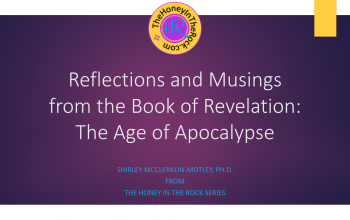A study in the book of Revelation.
The introduction to the breaking of the seals begins with the seal containing the white horse being broken. In the introduction, I give a rather lengthy discourse on horses in history. It must be understood that horses are not evil. However, they have been used throughout history for evil purposes as well as for positiveness, depending on who the riders were. John opens Chapter 6 with the words “And I saw.” This is powerful because it is used thirty-three times throughout the book of Revelation. Here it continues the vision from Chapter 5, but it introduces a new phenomenon. The Lamb receives the scroll in chapter five and breaks the first seal in chapter six. We don’t know how much time elapsed between Chapters 5 and 6. We do know that what John is seeing is a series of future events. We have to be able to distinguish between the events that have historically occurred, those that are occurring, and those that will ultimately take place in the future. Before I begin teaching on each of these four horses, I hasten to say that what is being seen are things that equate to events that will surely take place in the future. We know that everything that takes place in the earth is under the control of God who sits on His heavenly throne. The four seals that are broken are written in the form a syllogistic conclusion. In other words, a syllogism is a three-part logical argument, based on deductive reasoning, in which two premises are combined to arrive at a conclusion. So long as the premises of the syllogism are true and the syllogism is correctly structured, the conclusion will be true. In other words, It is not the actual horses and riders that ride the earth, but the spirits that they represent. While God allows evil to take place on the earth, He is not the author of evil, nor is He the agent of evil. Revelation is clear on this subject. We see that the head of only one horseman was described. Now many people equate this horseman with Jesus Christ because there is a white horse mentioned in Revelation 11 and again in Revelation 19. Many people simply assume that the rider of both horses is Jesus Christ. The white horse is a spiritual indication of the identity of the rider who comes conquering and to conquer. Jesus came that we might have life and that more abundantly. He came to set at liberty them that were lost. For whom the son made free is free indeed! Who is the imitator of Christ? Who comes to deceive many? Who wants to conquer mankind? The spirit of the antichrist comes to do these things. He is the beast who rides a white horse as a part of his deception.


